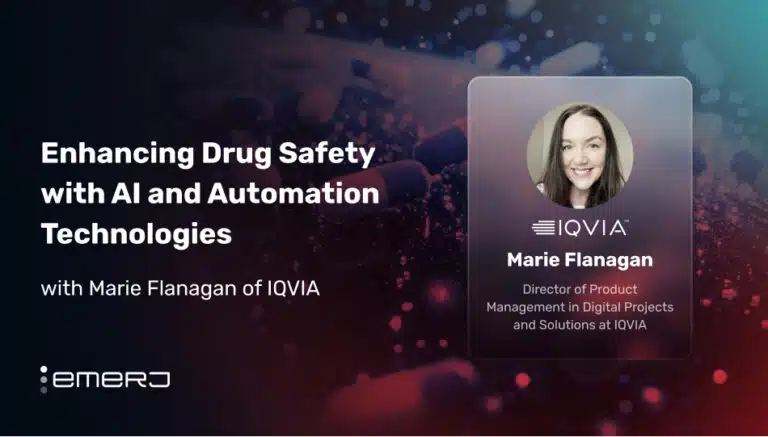This article was not sponsored, but draws upon a webinar sponsored by Uniphore. This article was written, edited, and published in alignment with our Emerj sponsored content guidelines. Learn more about our thought leadership and content creation services on our Emerj Media Services page.
AI adoption in finserv is challenging, but conversational AI has the added challenge of having a high bar for accuracy, as it directly impacts the customer’s experience. For this reason, crawl-walk-run is often the best approach to banks new to AI.
Recently, Emerj Artificial Intelligence Research hosted a webinar in partnership with Uniphore that touched on the challenges facing banks in pursuing early AI projects. Towards the end of the program, Uniphore Director of Product Marketing Kimberlee West provides a model for helping FIs transform their organization’s approach to the customer experience through automation and AI capabilities in three distinct phases:
In this article, we will:
- Examine Kimberlee’s guidance and the detail provided in the graphic above.
- Provide concrete definitions and essential use-cases and applications within each
- Give banking and finance leaders an enterprise roadmap for implementing conversational AI capabilities in their organizations beyond just the call center.
We will begin with the first “Foundational” phase of conversational AI transformation.
Phase 1: Building the Foundation
According to Kimberlee, the starting point for building a solid conversational AI foundation at a FI is asking two questions:
- Where do operations feel the most pain?
- How do we automate these processes?
The processes to automate may include integrating AI from the beginning but banking leaders should be skeptical. There is a more substantial likelihood that in the initial “foundational” phase that they could be starting too early in AI capabilities. Deferring to more simple forms of automation may be the safer option, for the time being, Kimberlee tells the webinar audience.
By eventually working through each phase, AI capabilities will be integrated into call center operations by the third and final “transformational” stage – but not by ‘jumping into the deep end’ too early. By definition, the foundational phase is principally concerned with where to implement automation first – as a basis for AI adoption and integration later.
For the best practices in judging where to automate and where to integrate AI in the foundational phase, we must ask ourselves some more questions focused on where the customer wants to be serviced.
According to First Orion’s 2022 Financial Services Customer Communications Report, banks are finding that 50% of customers prefer to call their bank with an urgent financial issue, instead of emailing them. That means, in answering this question, banking leaders must balance where their organizations automate the agent experience versus the self-service experience.
To strike the appropriate balance, Kimberlee advises banks and FIs to test their hypothesis or where they feel the most pain in their call center processes by finding trustworthy parameters for implementing automation.
These parameters can consist of the following:
- Call volume
- Agent cost
- Estimated ROI from decreasing call volume/increasing accuracy
To transition from the foundational to the strategic phase of conversational AI transformation, Kimberlee recommends looking at the intended target process and asking, “What would ROI look like if our organization developed an automated or AI solution for that particular problem?”
Use cases answering that question involve some degree of automating both the self-service and agent sides of call operations, or some combination. Finding the right combination, advises Kimberlee, will help inform the basis that’s going to deliver optimal customer experiences.
This is usually based on new places of focus where human agents – now able to focus on more complex problems – are spending their time:
“I think that the greatest value is going to be, ‘Let’s deploy a chatbot that’s going to support our password resets and all of those pieces. Let’s deploy a voice bot that’s going to be able to handle most requests when it comes to setting up some sort of bank account,’ etc. And so then that way, the agent, when they get on the phone with that customer, the types of scenarios that they’re going to be handling are going to be a bit more complex.”
– Director of Product Marketing at Uniphore, Kimberlee West
Phase 2: Building a Strategy
With the foundation properly set in the first phase, business leaders embarking on the second phase of CX transformation are in a position to ask, “how do we deploy AI across the entire customer journey?” Now is the time to think about strategy.
Once automated solutions produce more accurate customer results or address pre-set parameters in call volume and agent cost, organizations can think about the long-term commitment that a more extensive integration of conversational AI in their operations would require.
Organizations will know they’re firmly in the second phase of this process when:
- Leadership endorses a cross-company mandate to adopt conversational AI across the customer experience and all relevant processes.
- There is an autonomous team/office whose mission is to drive adoption across business units.
Conversational AI stands to improve two key areas in this phase:
- Customer personalization
- Finding insights from data collected in automation already taking place
Conversational AI is also generally applicable across all call center operations.
During the webinar, Kimberlee mentions sales and compliance among prominent use cases. Call centers can have unique places in compliance management, particular where it comes to handling consumer data and various privacies. In terms of sales, customer personalization stands to increase bottomlines by providing more relevant buying experiences for customers.
Taking a step back and being able to transfer information across these contexts provides an essential benchmark for judging how strategically organizations can leverage AI capabilities. Yet the most telling benchmark for knowing an organization has achieved the second phase in this cycle, says Kimberlee, is seeing adoption by both the customer and the agent and fluidity with AI capabilities in their workflows.
Phase 3: Transforming the Call Center
Transforming the call center with AI capabilities involves embracing the amount of customer interaction with these technologies, making them truly “conversational” – which Kim defines as the customer not feeling they need to respond to chatbots or human agents with “canned responses.”
She tells the webinar audience this means:
- High CSATs
- Full integration between vendors and internal stakeholders for cooperative innovation
- Customers are being serviced where they feel they need to be
- Self-service operations and agents can handle a higher volume
- Customer verification processes are built-in, making for more streamlined experiences
Built-in customer verification processes can include use cases such as biometrics for automatically verifying their voice on a call. Other systems can consist of faster authentication processes, such as two-factor authentication. Both are shown to demonstrably increase the quality of customer experience in terms of customer and agent time spend.
Once the transformational phase is thoroughly underway, organizations can focus on developing new business opportunities from the insights they are gaining from fully integrated AI capabilities in their call center operations, including:
- Anticipating customer needs
- Recommending tools and products tailored to customer context
In building technological capabilities that can anticipate customer needs, organizations can better react to market circumstances by providing new products and services to customers more directly. These will be valuable tools in addressing trends that banks should be offering new products beyond localized services they have depended on for the last few decades.
Banks and FIs turning call centers from cost centers into platforms for promoting and even testing new national offerings to customers in highly customizable products and services underscores the true transformation taking place through the proper integration of conversational AI capabilities.




















